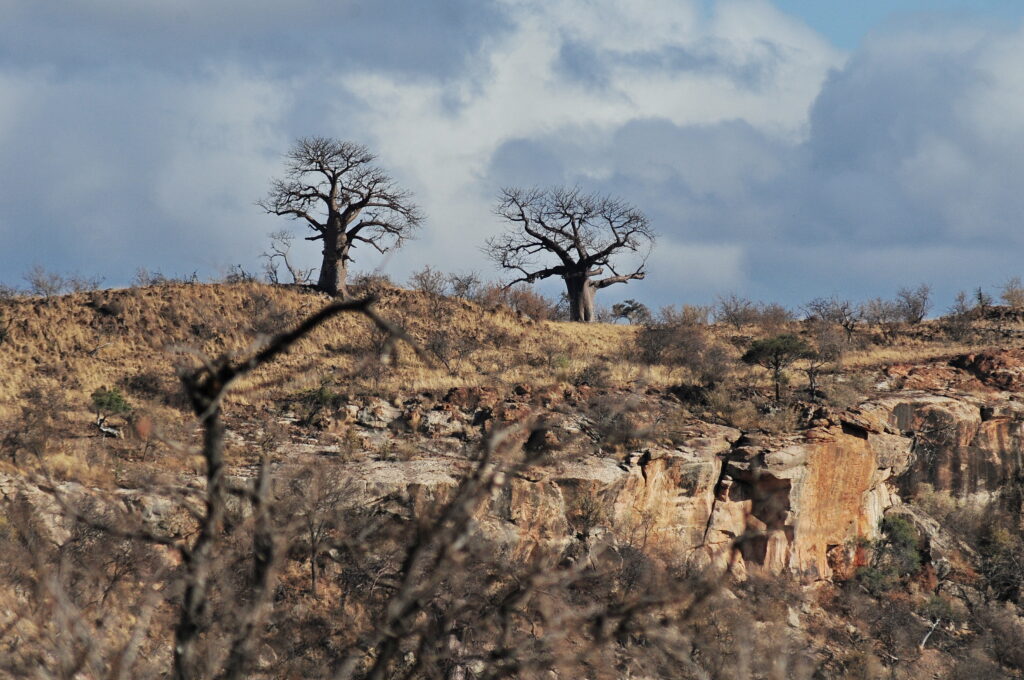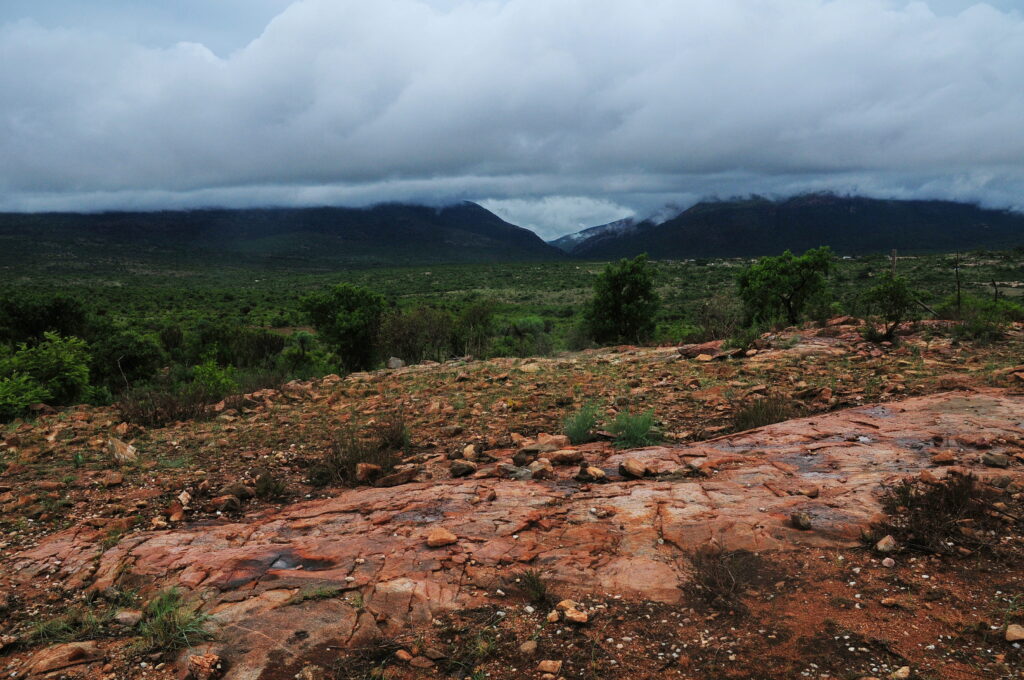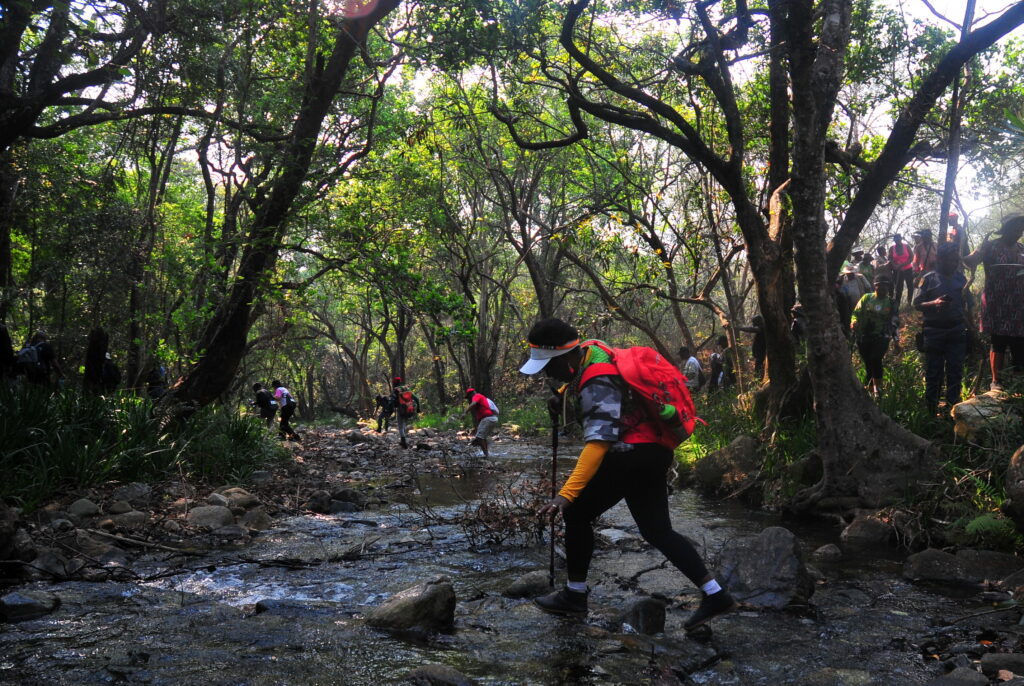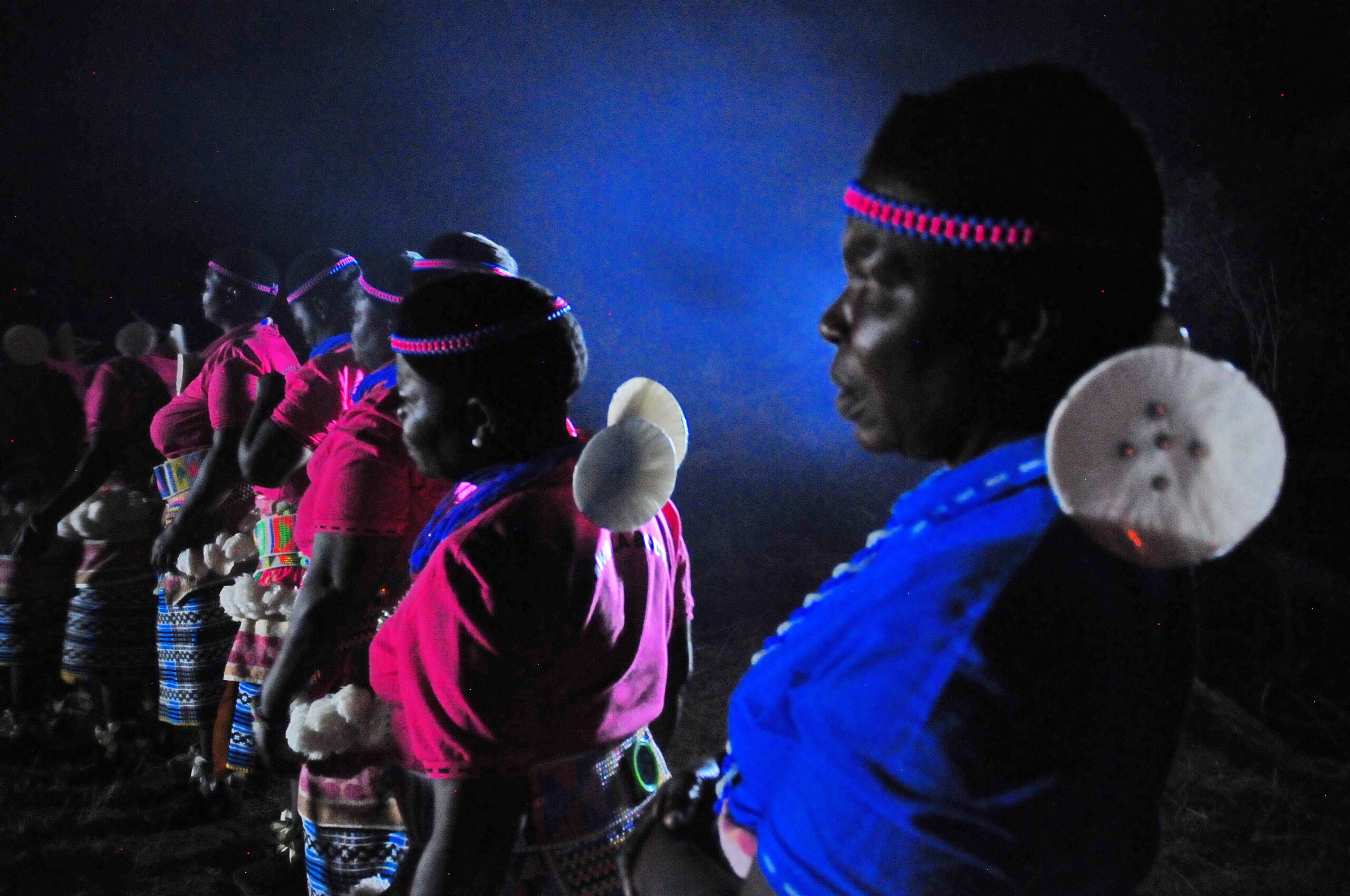Shoks Mnisi Mzolo and Bunye Tshikhudo travel up north and are seduced by the warm heart of Limpopo province – South Africa’s gateway to Africa
It is almost noon, and the swelter tells the rest of the story of Limpopo, South Africa’s tropical province. Just two hours ago, we were departing Joburg, a bustling jungle of sky-smooching shiny buildings. That frame has since yielded to sweeping savannah views on either side of N1 – a well-maintained highway that stretches for 2,000km, from Cape Town to Polokwane on to Musina, a border town north of the Tropic of Capricorn.
While on geography, the eponymous river, which travels for 1,750km in a clockwise direction before meeting the Indian Ocean, spans four countries, including Zimbabwe, where the Limpopo is the longest. In South Africa, it’s the second-longest river after the Senqu, also known as the Orange River. Right here, where the two republics meet the third, Botswana, is the site that aeons ago hosted a sophisticated society called the Kingdom of Mapungubwe in what is now known as Vhembe, a soulful district.
Home to the Cradle of Humankind, ancient rock paintings, the planet’s only and a massive national park, most of Limpopo boasts a year-round summer. It is also home to plenty of glades and waterfalls. Welcome to Eden. It’s lush. Pick any shade of green. This is the country’s breadbasket, and many people here exude warmth. Stargazers say this is the best place to be.
Human stars aren’t a rarity either: Cassius Baloyi, Caster Semenya, Prof Mahlo Mokgalong, Refilwe Ledwaba, Ridhwan Khan, Sho Madjozi as well as late iconic polyglots Aletta Motimele and Charlotte Maxeke, hail from here. Don’t forget Vakhegula Vakhegula, the granny’s popular football team, and a beacon named Mbilwi, a science and mathematics special school famous for producing 100% matric pass rates.
The sky is a stunning blue today. The air, generally crisp and clean, is even cleaner after the recent rainfall. Sites of ancient history and unparalleled beauty, with birdsong adding soundtrack to the picture, reign. Such sights, promising memories that will linger long after sunset on the bushveld, awed our forebears who walked here centuries ago searching, as hunters or traders, for a living.
As far back as around 1200, the people of Mapungubwe participated in inter-continental trade: some of them exported gold and other commodities to North Africa and beyond, taking in coastal states like Mombasa (founded circa 900).

Yanking us to the present, Limpopo-born youngster and anthropology student Vhuthuhawe Ramuli explains that these days a trip to Mapungubwe is akin to “a history lesson with a side of lions”: that site welds history and wildlife. Here we are, walking in the footsteps of our forebears and enjoying age-old, uncurated beauty.
Keeping true to their age-old tradition, baobab trees raise their hands in benediction. The escarpment, on some days quietly mingling with tired clouds, watches on. “If you love nature and enjoy great weather, you’ll love Limpopo: the landscape, the scenery, sweet birdsong,” marvels Nakidde Grace, a Kampala-based entrepreneur. Visa restrictions between SA and Uganda stifle tourism, business leader Damali Ssali once noted.
As things stand, Uganda was last year SA’s source of 13,000 holidaymakers out of a total 9-million international arrivals who in turn left ZAR 93-billion in forex (arts & culture, hotels, restaurants, shopping, sports, taxis, etc.). Still, VFS Global’s prohibitive fees and mistreatment of travellers from Nigeria and Uganda, for two, continue to dampen southbound traffic.
Strangely, VFS claims deep commitment to supporting” the development of “travel and tourism to and from the continent”. In a classic case of myopia, Pretoria has done nothing about VFS charging service charges that excessively eclipse the visa price tag.
So, travel operators keen on entering the African market north of the equator have fewer incentives. For the record, SA hosts 71,000 visitors from the 16-nation West Africa. That’s tiny – less than a fifth of 380,000 from just France and Germany. Visas, not the distance, are a factor.

On the other hand, Pretoria – like Lusaka and other neighbours – requires visas from DRC nationals while offering open access to many in the Global North. Malawi’s recent visa waivers exclude the Congolese despite geographic and cultural proximity. The disjuncture is sad. Isn’t mobility a commodity?
Inbound traffic to SA, more so for Limpopo, is over-reliant on Southern Africa. The region accounts for nearly two-thirds of the 9-million arrivals to SA. Europe is the source of 1.3-million visitors (14%) and Asia 3%, exposing SA’s lazy marketing in petrodollar-rich UAE or China, with 145-million outbound travellers.
It’s not too late for today’s leaders to draw inspiration from Mapungubwe, which, back then, penetrated global markets. Last year, the South African domestic market yielded ZAR 61 billion to the GDP, thanks to 11.5-million travellers, StatsSA figures show. For context, Uganda scrapes 4.2-million international and domestic holidaymakers to Zambia’s 2.4 million tourists.
According to the World Travel & Tourism Council, Africa attracts 84 million visitors per year with Morocco hosting 17.4 million of them. SA should be, by now, nearing 30-million arrivals given its many pros: air connectivity, world-class infrastructure, nice weather, cool prices, visa exemptions for Southern Africa and most of the wealthy West, a diversity of attractions, and the 2010 soccer jamboree – the globe’s biggest PR campaign that is yet to be capitalised on in any real way.
“There’s so much that makes me want to come back. The experience was breath-taking,” Grace adds, re-tracing her steps to an achingly beautiful hamlet of Makgobaskloof (now Magoebaskloof), an hour’s drive from Polokwane, along the scenic R71.
“If I showed someone around, I’d take them to Blyde River, Mapungubwe and Magoebaskloof,” says Ramuli, singling the latter for the types of tourists who “love adventure like zip-lining, or just screaming your lungs out”. She is also enchanted by Blyde River, a gem on the edge of Kruger, where you might even share a selfie with a cheeky impala!

The therapeutic sights and sounds here must have inspired the genius of Moses Tladi. His “repertoire brings to life panoramic vistas of many sites in Limpopo’s Sekhukhuneland” and other places where Tladi’s art, and that of his peers, was hugely downplayed during apartheid. By all accounts, the land of Sekhukhune, that Judith Sephuma thinks of so longingly, as Lerato La Pelo Yaka goes, is a stunner. So is Ga-Modjadji. Valleys, glades, mountains and hills blend delectably as if this frame is straight out of an artist’s canvas.
Drawcards abound. Though off the beaten track, the Waterberg savannah biosphere reserve – a birders’, hikers’ and photographers’ favourite – is wondrous: the landscape gets greener and the temperature warmer with waterbodies showing up everywhere.
The reserve, larger than Cyprus, Jamaica and Mauritius combined, is as good a snapshot of the globe.
On the reserve’s eastern frontier sits Tiveka Game Lodge, a hit with travellers seeking luxury and adventure. Launched in 2006, the lodge is now among the bushveld’s most loved leisure spots. “Some guests fall in love with our game drives and seeing the animals up close. Everyone seems to find their own special experience here,” says founder MD Tiveka Mathumbu.
Asked about her favourite way to explore Limpopo, she lists Kruger’s Mopani Camp and, switching to our ancient past, Echo Caves. Back to the ever-busy N1. Windmills beckon, signalling the presence of homesteads. Some of the northbound trucks ferry cargo from Gauteng or Durban to regional hubs like Lubumbashi and Lusaka.
Toyota kombis, Japan’s top export to Africa, ferry the masses. German horses hurtle up and down. Bela Bela, a resort town liked for its hot mineral springs, spools past. In areas known for notable attractions, busloads of tourists, sample curated authenticity where hotel bosses gather Africans to sing, dance and serve beer or offal to guests. That’s not authentic.
Anyway, materialising there towards the culturally rich Mokopane is the escarpment, known as Maloti in Sesotho and Drakensberg in Afrikaans. Mokopane, just south of Polokwane, has come a long way. There was a time when its beauty was marred by über racism.
The eponym is King Mugombane, also Mughombane, but the Dutch and the French called him Makapan in case you wonder why this area now answers to Makapansgat. The Cradle of Humankind heritage site here, inhabited some 150,000 years ago, is a victim of poor management. But, by the time you’re done – especially if your guide is Mariri Peter Molomo, who melds palaeontology, geography, politics and all else with much ease and captivating storytelling skills (in many tongues) – you’d feel as if you’ve actually touched the timeline, from the 1900s all the way to the Stone Age.

From palaeontology to crystal balls: Limpopo tourism boss Moss Ngobeni sees domestic and global traffic growing by a third, to 10-million this year. Overreliance on wildlife is bad for the planet and can stunt sectors like gastronomy, meetings, and the creative industry – think Noria Mabasa and Nozinja. How many of the 145 million tourists from China choose Limpopo in any year?
Of the 70 million Europeans who holiday abroad, only a trickle travel here. Meanwhile, fellow Africans, regardless of visa and budgetary limitations, aren’t rushing to the south to sample time warp or fake authenticity draped in animal skins.
For its part, Limpopo records 500,000 international arrivals (mostly from Moçambique, Zambia and Zimbabwe). Like baobab trees with their hands in the sky, young hospitality graduates are praying. Savannah vistas and gems are waiting to see and to be seen: from the soul-rejuvenating Magoebaskloof to Waterberg, a slice of Eden. Pity, top dogs don’t care. Look at the VFS mess.
Look at unrealised job opportunities. Yet, beyond safaris, Limpopo’s menu is long: magical sunrises, mountain camping, heart-pounding abseiling, magical hot-air ballooning, stargazing, and so on. This is the junction of nature, adventure and laughter; it’s the place where the present hangs out with the past.

Be First to Comment